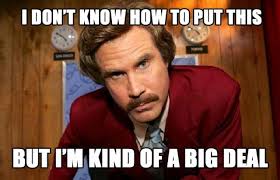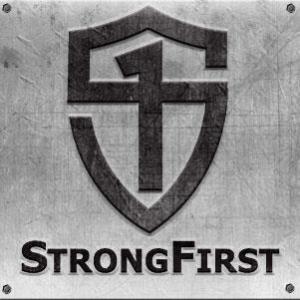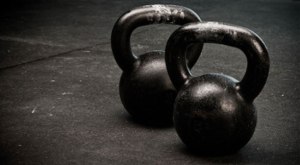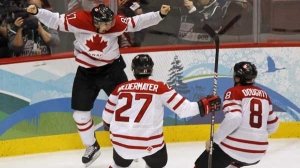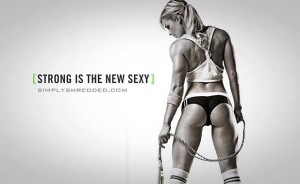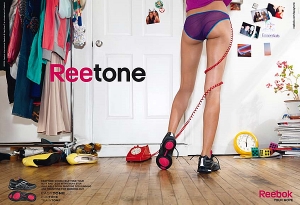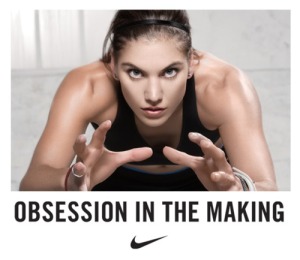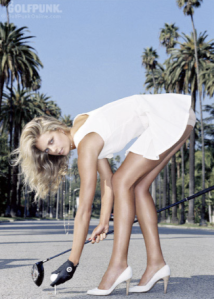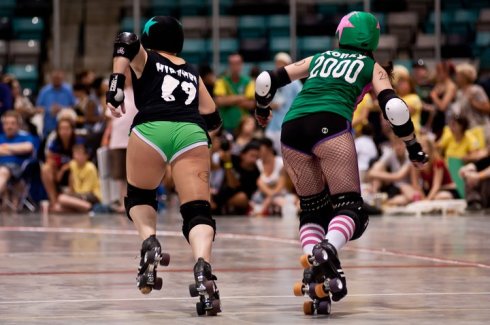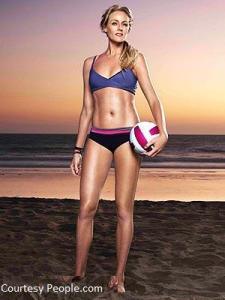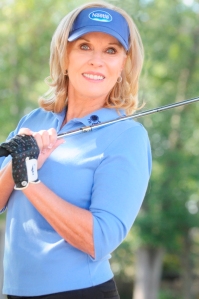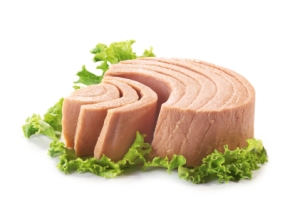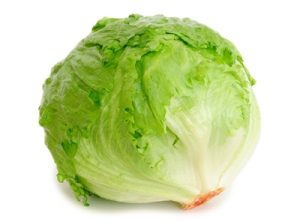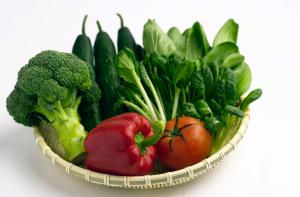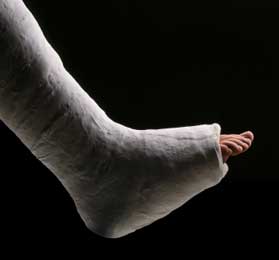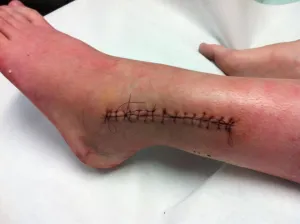It’s that time of year again. Last weekend, I attended the Canfitpro International Fitness and Club Business Conference. It was their 20th anniversary, and it was massive. Allegedly, there were 15,000 people through the doors for the conference and trade show. I am inclined to believe it after some of the lines, and the sardine can like lecture rooms. All in all, a pretty decent weekend – I’ve tried to highlight my big take-aways from the event, and put them into real world (derby) application.

Todd Durkin: You are only as strong as your weakest link, as efficient as your worst movement.
My co nference started with a great Todd Durkin session. I’ve heard Todd speak before, he’s an awesome presenter, and he’s always a high-energy way to start the day. This year’s session was “Core and Cuff”. He focused on the pelvis, shoulder girdle, and varying your training approaches – this was a recurring theme in the sessions I went to: Don’t get so locked in to a particular hand or foot position within an exercise, but rather experiment and try new things. Todd said not to forget the importance of breath work. And, as per usual, had the life advice that you should be regret-less, not fearless. Feel the fear, do it anyway.
nference started with a great Todd Durkin session. I’ve heard Todd speak before, he’s an awesome presenter, and he’s always a high-energy way to start the day. This year’s session was “Core and Cuff”. He focused on the pelvis, shoulder girdle, and varying your training approaches – this was a recurring theme in the sessions I went to: Don’t get so locked in to a particular hand or foot position within an exercise, but rather experiment and try new things. Todd said not to forget the importance of breath work. And, as per usual, had the life advice that you should be regret-less, not fearless. Feel the fear, do it anyway.
Derby Application: There are a few derby applications here. Absolutely that the things that scare you, both on and off the track, are often the most worth doing. Also, as far as self-improvement and team-building goes – you are only as strong as your weak link. That skill you hate, you should probably work on it more than any others. That teammate who’s lagging behind, spend more time figuring out what she needs. If you do, you’ll become a more efficient athlete, and your team will tighten up.
 The opening ceremony keynote speaker was, wait for it… Jillian Michaels. Hm. Not going to lie, almost skipped this, but the trade show wasn’t open yet. Here’s the funny part – I didn’t totally hate her. And when I find myself parroting the things I learned, some of the insights are hers.
The opening ceremony keynote speaker was, wait for it… Jillian Michaels. Hm. Not going to lie, almost skipped this, but the trade show wasn’t open yet. Here’s the funny part – I didn’t totally hate her. And when I find myself parroting the things I learned, some of the insights are hers.
Where she went right was talking about being in the right place at the right time, knowing the right people and taking the risk. she didn’t try to convince us that she was a brilliant trainer, she didn’t talk much about her training methods at all. She mostly talked about identity. She spoke about trying too hard to present the image that we think people will respond to (in auditions, in training, in life), mostly because we don’t think who we really are is good enough. Yep, I can relate to that. She said that her biggest challenge with a lot of the Biggest Loser clients is not getting them to exercise or eat right, since they’re essentially in a bubble that looks after that for them. The challenge is to get them to believe that they are people who can exercise and eat right. When all of your internal messaging says, “I’m lazy”, “I can’t eat the right things”, “I’m just not a motivated person”, “I don’t follow-through”, “I’m a failure”, those messages become your identity. And questioning those statements feels like a challenge of self. Sound familiar? It did to me. So the trick is to make small changes that don’t seem like a shock to the concept of self. Sure, a lazy person might not go for a 10k run, but they could probably walk the dog around the block each night. And thus, habits are built and changes in the messages begin to take shape. So, Jillian, I’m actually glad I didn’t bail on your talk.

Paul Chek: I’ve never seen Paul Chek present before. I think, like sky-diving or going to Vegas, you have to do it once. It was a 3 hour lecture on core function and assessment. Paul had only expected a 90-minute talk, so he went a little, um, off-notes.
Some key takeaways from Mr. Chek – Don’t eat gluten. Don’t smoke – vaporize. Your organs are alive and moving just like plants in your body, realize that what you do with your muscular system affects the organs too. Adrenal fatigue (caused by stress) will shut down your hip flexors and low back, really compromising your movement – the body does this on purpose to get you to slow the heck down. Proper tongue position is pressed into the roof of the mouth behind the front teeth – if your mouth is open and your tongue is out, you are likely being chased, and are not stable. Holding your breath usually comes from a fear pattern – teach yourself the importance of connecting to breath.
Derby application: Breathe. Especially when you’re scared. It will loosen up your skating, and help you to engage your whole body fully. Also, try to keep your tongue behind your teeth.
 Ajamu Bernard, KBell Jam: This was an awesome session to wake up for. Kettlebells! Bright and early in the morning! KBell Jam was a pretty cool diversion from the strictness of SFG training. There was a lot more emphasis on flow and fun. While I won’t be trading styles any time soon, KBell Jam was a interesting look into what others are doing with kbs and how the modality is evolving and growing.
Ajamu Bernard, KBell Jam: This was an awesome session to wake up for. Kettlebells! Bright and early in the morning! KBell Jam was a pretty cool diversion from the strictness of SFG training. There was a lot more emphasis on flow and fun. While I won’t be trading styles any time soon, KBell Jam was a interesting look into what others are doing with kbs and how the modality is evolving and growing.
 Chuck Wolf: The site of the injury should be the last place you look – the body doesn’t work in isolation. Your proprioceptors are activated by lengthening, so don’t overlook dedicated flexibility work.
Chuck Wolf: The site of the injury should be the last place you look – the body doesn’t work in isolation. Your proprioceptors are activated by lengthening, so don’t overlook dedicated flexibility work.
I didn’t get a chance to go to any of Chuck Wolf’s classes at last year’s Perform Better, and when I heard him in the PB panel, I regretted missing him. His sessions were a big reason that I signed up for CanFitPro this year. His Highways in Flexibility presentations were a conference highlight for sure. Regret – not going to more/all of his sessions.
Chuck took an exploratory approach to flexibility and taught some really helpful movements that can be incorporated as stretch or strengthen. He talked a lot about the fascial lines (still working my way through Myers’ Anatomy trains), saying that collagen favours mobility. Our joints don’t touch, they float around in a network of fascia, so we need to take care of that tissue and work along the whole chain. Seeing the lines in real-life movement, along with his guidance helped some of the ideas in the book to gel. After attending both his lecture and hands-on, I’m committed to really learning about fascia, how it works, and how we can work with it. He drove home that as trainers, we need to nail the big rocks – foot and ankle complex, hip and knee. Those areas are where most pain can be found (knees, hips, low backs, shoulders), so let’s make sure that mobility in those areas is optimal. He too advised not to be married one foot or hand position, height, angle, side, etc., but to vary as individual needs do.
Derby Application: Vary your approach to learning skills. Try different sides, different weight transfers, use different levels. You might find that by making little tweaks to your body placement, you make a big improvement to your overall movement quality.
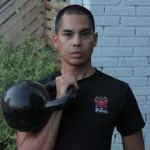 Chris Lopez: Okay, time to come clean. I totally snuck out on Saturday afternoon, and went to Bang Fitness for an SFG prep session with the wonderful Chris Lopez. This was the second prep session before the SFG in November. Every time I come to see Chris and the guys at Bang, I leave feeling SO MUCH better about my training. They give loads of feedback, great tips, and genuinely want to clean up your movement. Also, Chris shared a quick Primal movement based warm-up that I’ve started doing in my own practice – feels great! When I started into the new Brett Jones SFG prep program after returning from the weekend, I think I was able to synthesize some of the cues that I received at the workshop. I did some heavy swings, really focusing on forcing the bell down, and finally feel like I got it.
Chris Lopez: Okay, time to come clean. I totally snuck out on Saturday afternoon, and went to Bang Fitness for an SFG prep session with the wonderful Chris Lopez. This was the second prep session before the SFG in November. Every time I come to see Chris and the guys at Bang, I leave feeling SO MUCH better about my training. They give loads of feedback, great tips, and genuinely want to clean up your movement. Also, Chris shared a quick Primal movement based warm-up that I’ve started doing in my own practice – feels great! When I started into the new Brett Jones SFG prep program after returning from the weekend, I think I was able to synthesize some of the cues that I received at the workshop. I did some heavy swings, really focusing on forcing the bell down, and finally feel like I got it.
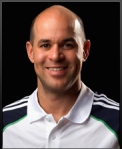 Kevin Darby: We need mobility to move. Mobility means independent living. Personal trainers: Helping you to look good naked and poop efficiently.
Kevin Darby: We need mobility to move. Mobility means independent living. Personal trainers: Helping you to look good naked and poop efficiently.
Again, after having seen Kevin Darby in a panel last year, I was anxious to join one of his sessions. This one didn’t disappoint. I learned a ton about fascia (fascia was a big deal this year). He described (the superficial layer) as a big jean tuxedo fresh out of the dryer – it needs movement and hydration to turn into a comfortable thing to move around in. Without mobility and moisture, it’s like too-tight jeans, and it clamps down on your blood vessels, slows blood flow, sort of acting like a splint. As fitness pros, we should aim to identify where in people’s day-to-day movement patterns to insult to their tissue is (where’s the energy leak, where do you move inefficiently, where are you making a compensation?) and correct it. Without identifying the faulty patterns, we’re just going to be caught in a cycle of strengthening and resetting. In a nutshell, doing exercise without setting the right environment (fascial, habitual, etc.) is basically dumb.
 Terry Kane: I took a class on knee post-rehab with Dr. Kane. Good stuff. He broke down what is recommended with each type of knee injury, healing times, what will aggravate each injury, and so on. He gave a handy tip about tissue colour relating to healing time – the redder the tissue, the faster it heals. Also, he made the solid point that in a post-rehab situation the absence of pain does not equal complete healing. He also had a pretty cool insight about how aging baby boomers set fitness trends (still!). A few years ago, HIIT was all the rage, now as boomers are getting a little older, functional training, yoga, and zumba are more popular. he posits that following that trend – aqua and cycling will be huge as the boomers age.
Terry Kane: I took a class on knee post-rehab with Dr. Kane. Good stuff. He broke down what is recommended with each type of knee injury, healing times, what will aggravate each injury, and so on. He gave a handy tip about tissue colour relating to healing time – the redder the tissue, the faster it heals. Also, he made the solid point that in a post-rehab situation the absence of pain does not equal complete healing. He also had a pretty cool insight about how aging baby boomers set fitness trends (still!). A few years ago, HIIT was all the rage, now as boomers are getting a little older, functional training, yoga, and zumba are more popular. he posits that following that trend – aqua and cycling will be huge as the boomers age.
Derby Application: *THE ABSENCE OF PAIN DOES NOT EQUAL COMPLETE HEALING* Do you hear me derby girls? Because I think that’s maybe the most important thing that we need to learn as athletes. Taking a game off to recover, even if you’re feeling better is a whole heck of a lot better than taking a season off to deal with a recurring issue. Let yourself heal, listen to your medical professionals, be kind to your body.
 Tosca Reno: Tosca was the closing ceremonies keynote speaker and she was really engaging. She spoke on clean eating, and told us all to eat more broccoli and coconut oil (which in some way will help you to get it on more). The thing that resonated most was her encouragement to eat living foods rather than dead foods. I think it’s an easy and illustrative way to describe clean eating. She also advocated practicing gratitude every day.
Tosca Reno: Tosca was the closing ceremonies keynote speaker and she was really engaging. She spoke on clean eating, and told us all to eat more broccoli and coconut oil (which in some way will help you to get it on more). The thing that resonated most was her encouragement to eat living foods rather than dead foods. I think it’s an easy and illustrative way to describe clean eating. She also advocated practicing gratitude every day.
I also took a session with Peter Twist addressing group sports conditioning. We used some neat new toys, specifically the Surge (like a big tube full of water). The Surge was pretty cool, and pretty challenging, and I vowed to find a good way to incorporate more variable load work (sandbags, water, toddlers) into my training. I also took a class with Dr. Mike Bracko that focused on innovative partner training – again, make it fun, think outside the box, vary your movement. Dr. Kevin Jardine echoed the sentiment in his session on neuromuscular conditioning. He said that it’s important to make exercise not only physically challenging, but cognitively engaging as well – ways to do this include variable loads, changing angles and directions, novel and unexpected movements. I wish I’d had time to go to more nutritional sessions, but there are only so many things you can do in 3 days.
All in all, the conference and trade show were alright. One of the gripes you can read about on CanFitPro’s facebook page is that the trade show was more geared to club managers than independents or home fitness users, hence WAY fewer free samples of stuff and not a ton of excellent deals. Fair play, that’s where the big money comes from. Was it a little lean on samples? Sure. Were some of the conference sessions big pitches to spend money on the presenter’s products? Yep (this was frustrating when the whole session was devoted to selling the product, instead of open exchange of helpful information). I think as presenters mature, they realize that good information will sell itself. If you help something become clear to someone else, they’ll want to buy your product, or attend your mentorship, or take your course. If you’re closed off and say all the info is in the product, your chances of a sale plummet. At least in my own experience, this is true of the fitness pro-client relationship too. Just be the expert, and help people when they ask for it. They’ll come respect your knowledge and when they’re ready for a trainer, you’ll be the guy. And I guess the derby application would be to give away free tickets to folks who would never attend derby regularly. You’ll make up the money in merch and beer, and you might gain some new fans.
The other lesson I learned? Start saving now for next year’s Perform Better.
Tags: canfitpro, canfitpro conference 2013, fascia, knowledge is power

